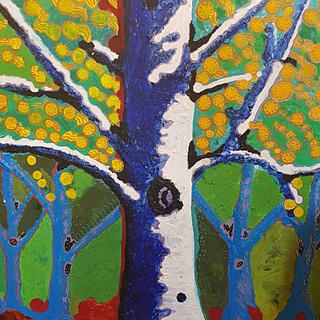The Art of Perspective: Creating Depth in Your Paintings
- Charm Manach Private Work
- Jan 23, 2024
- 3 min read
Greetings to those of you who love art and want to be artists! We're going to go into the intriguing realm of artistic technique today and examine "The Art of Perspective." Come along on this artistic adventure with me as we uncover the techniques for giving your paintings depth and producing visual stories that draw spectators into completely immersive environments. As an additional layer of understanding, consider this an interconnected exploration with our guide on "Art and Emotion: A Guide to Connecting with Paintings on a Profound Level." Read more about Art and Emotion here.

The Foundation: Understanding Perspective in Art
A basic idea called perspective is what makes paintings have depth. Through the use of perspective, an artistic method that simulates how the human eye sees the world, painters can produce the appearance of distance and three dimensions on a two-dimensional canvas. It's important to grasp the fundamentals of atmospheric and linear perspective, regardless of painting experience.
Linear Perspective: Drawing the Eye into the Distance
Linear perspective involves the use of lines and vanishing points to create the illusion of depth. By converging parallel lines toward a single point on the horizon, artists can simulate a sense of distance and space. Whether you're painting a bustling cityscape or a tranquil countryside, mastering linear perspective adds a dynamic quality to your compositions.
Atmospheric Perspective: Capturing the Essence of Distance
Nature's own artistic technique, atmospheric perspective, introduces the impact of air and light on our perception of distance. As objects recede into the distance, they often appear hazier, cooler in color, and less distinct. Integrating atmospheric perspective into your paintings enhances realism, creating a seamless transition from foreground to background.

Overlapping and Size Variation: Creating Visual Hierarchy
A further effective technique for creating depth is the deliberate application of size variation and overlapping. You create a distinct visual hierarchy by arranging things in front of one another or by changing their sizes according to how far away they are from the spectator. This method leads the viewer's eye through the levels of your composition while also adding depth.
Incorporating Foreground Elements: Inviting Viewers into the Scene
Bringing elements into the foreground of your painting not only creates a sense of immediacy but also invites viewers to step into the scene. Whether it's the outstretched branches of a tree or the subtle details of a cobblestone path, foreground elements act as visual anchors, grounding the viewer in the spatial context of your artwork.
Depth Through Color and Contrast: Setting the Mood
Color and contrast play pivotal roles in creating depth and setting the mood of your paintings. Warm, vibrant colors often advance, while cool, muted tones recede. Playing with contrasts in light and shadow further emphasizes the three-dimensional aspects of your composition, adding a layer of emotional depth to your artistic narrative.
Art and Emotion: A Harmonious Connection
Connecting the technical aspects of perspective with the emotional resonance of your paintings is where the magic truly happens. Our exploration of "Art and Emotion: A Guide to Connecting with Paintings on a Profound Level" provides insights into infusing your artwork with emotional depth. Read more about Art and Emotion here.

Engaging the Viewer: Inviting Emotional Connection
Think about the emotional trip you wish to take your audience on as you create depth in your paintings. Is it a bustling cityscape full of vitality, or a quiet landscape that inspires tranquility? You may lead viewers through an immersive experience and establish a connection that goes beyond the visual by manipulating perspective and emotion.
Conclusion: A Multidimensional Canvas of Expression
Achieving proficiency in perspective painting allows you to turn your canvas into a three-dimensional work of art. Emotional resonance takes your work to new heights of connection, while perspective serves as the brushstroke that gives your artistic vision life. When combined, they produce a symphony of depth that beckons spectators to go deeper into their own imaginative worlds.
I salute the storytellers, the artists, and those who take on the task of in-depth creation. I hope your viewpoints are as infinite as your inventiveness and that the deep feelings that underpin the universality of art are reflected in your works.
.png)




Comments